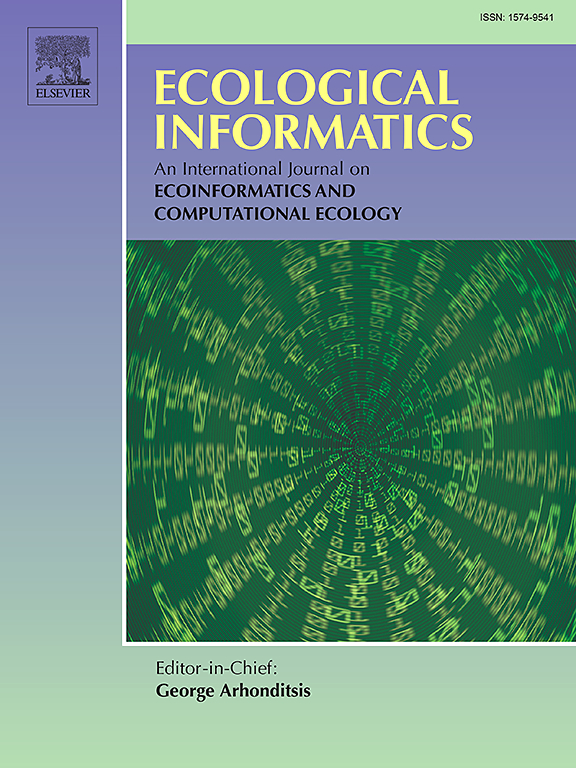Open real-time, non-invasive fish detection and size estimation utilizing binocular camera system in a Portuguese river affected by hydropeaking
IF 7.3
2区 环境科学与生态学
Q1 ECOLOGY
引用次数: 0
Abstract
The need for efficient approaches to track and assess fish behavior in rivers impacted by hydropeaking is increasing. Nonetheless, employing an automated camera system for underwater monitoring requires that the algorithms function under highly variable environmental conditions, which affect the ability to detect and assess fish size. Additionally, there is a lack of openly accessible freshwater fish classification and size estimation datasets. To address these limitations, we propose a binocular underwater fish monitoring system capable of real-time fish detection and size estimation. The system was deployed and tested over one week in two Portuguese rivers affected by hydropeaking. The week-long analysis also provided new insights regarding wild fish behavior in rivers affected by hydropeaking. Results indicate that hydropeaking strongly influences how fish may use instream flow refuges during hydropeaking. Fish were less frequently detected in the flow refuge during peak flow events, suggesting that the flow conditions created habitat instability and difficulty accessing the flow refuge. In contrast, fish in the non-hydropeaking river consistently used refuge areas, reinforcing their importance as shelter during natural flow variations. This study demonstrates the potential of a computer vision-based pipeline for real-time, fully automated fish monitoring of hydropeaking’s impacts on riverine fish. Additionally, we provide PTFish, an open dataset with 18,523 manually annotated frames featuring infrared and color video frames. These findings emphasize that automated, camera-based solutions for hydropeaking monitoring can be used to develop evidence-based mitigation strategies to sustain fish populations in rivers impacted by hydropeaking.
在葡萄牙受水峰影响的河流中,利用双目相机系统进行开放式实时、非侵入性的鱼类检测和大小估计
对追踪和评估受水峰影响的河流中鱼类行为的有效方法的需求正在增加。尽管如此,采用自动摄像系统进行水下监测需要算法在高度可变的环境条件下运行,这会影响检测和评估鱼类大小的能力。此外,缺乏可公开获取的淡水鱼分类和大小估计数据集。为了解决这些限制,我们提出了一种能够实时检测和估计鱼类大小的双目水下鱼类监测系统。该系统在葡萄牙两条受水峰影响的河流中进行了为期一周的部署和测试。为期一周的分析还提供了关于受水峰影响的河流中野生鱼类行为的新见解。结果表明,水峰对鱼类在水峰期间利用水流避难所的方式有强烈的影响。在水流高峰期间,鱼类在水流避难所中被发现的频率较低,这表明水流条件造成了栖息地的不稳定和进入水流避难所的困难。相比之下,非峰值河流中的鱼类一直使用避难区域,在自然流量变化期间加强了它们作为避难所的重要性。这项研究展示了基于计算机视觉的管道的潜力,可以实时、全自动地监测水力峰值对河流鱼类的影响。此外,我们还提供了PTFish,这是一个开放的数据集,包含18523个手动注释的帧,其中包括红外和彩色视频帧。这些研究结果强调,基于摄像机的自动化水峰监测解决方案可用于制定基于证据的缓解策略,以维持受水峰影响的河流中的鱼类种群。
本文章由计算机程序翻译,如有差异,请以英文原文为准。
求助全文
约1分钟内获得全文
求助全文
来源期刊

Ecological Informatics
环境科学-生态学
CiteScore
8.30
自引率
11.80%
发文量
346
审稿时长
46 days
期刊介绍:
The journal Ecological Informatics is devoted to the publication of high quality, peer-reviewed articles on all aspects of computational ecology, data science and biogeography. The scope of the journal takes into account the data-intensive nature of ecology, the growing capacity of information technology to access, harness and leverage complex data as well as the critical need for informing sustainable management in view of global environmental and climate change.
The nature of the journal is interdisciplinary at the crossover between ecology and informatics. It focuses on novel concepts and techniques for image- and genome-based monitoring and interpretation, sensor- and multimedia-based data acquisition, internet-based data archiving and sharing, data assimilation, modelling and prediction of ecological data.
 求助内容:
求助内容: 应助结果提醒方式:
应助结果提醒方式:


